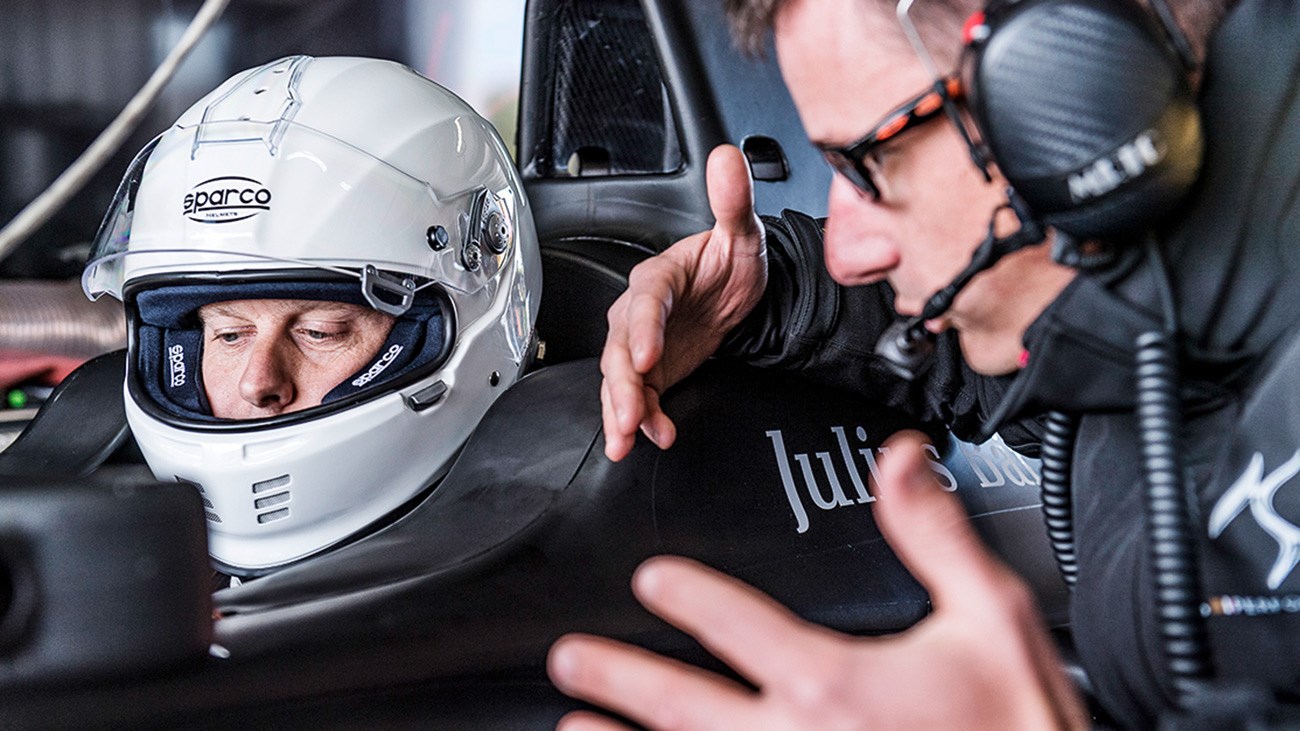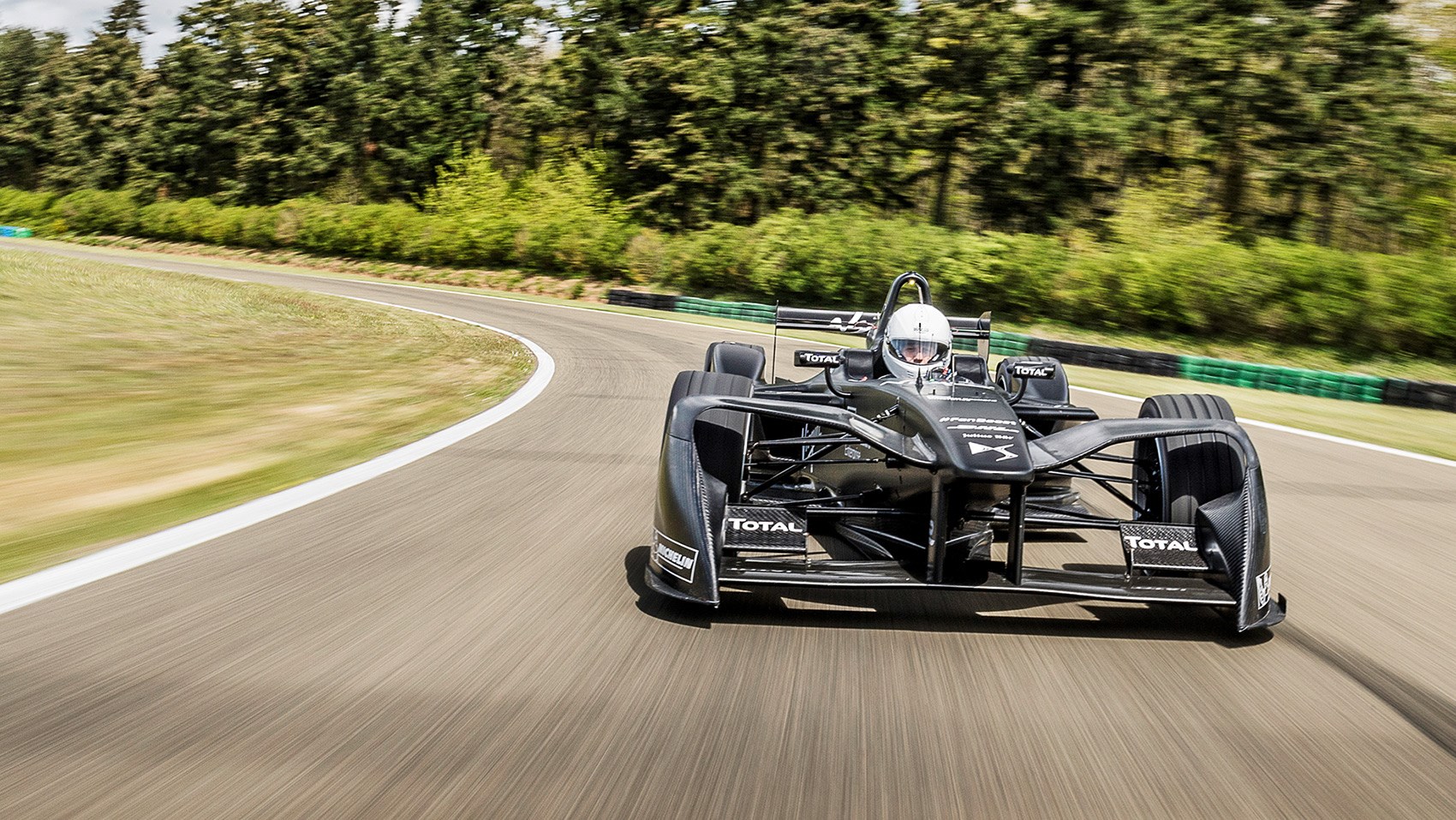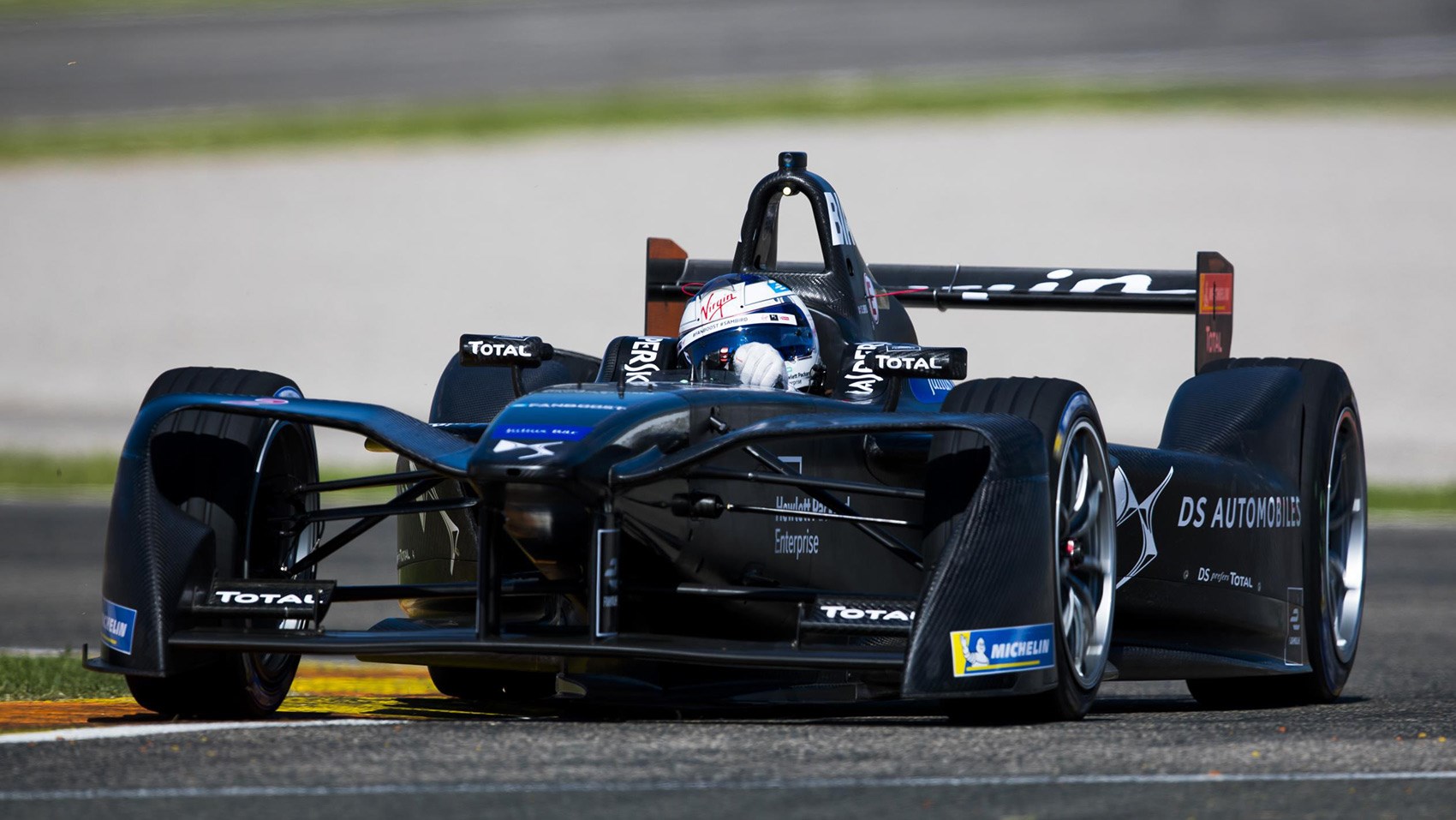► We drive the DS Formula E racer
► Latest DS Virgin Racing car
► Full review, specs and details
The first time I accelerate hard in the DS Virgin Racing DSV-02 Formula E electric race car, I don’t quite know what to expect. There’s no vibration, very little noise – none of the cues, in other words, that tell our brains to expect a huge burst of acceleration – but I know that an electric motor delivers maximum torque from a standstill, so I feed in the throttle with a little apprehension, wondering how much of the force the heavily worn rear tyres will soak up.
What happens next is pretty extraordinary: the rear tyres grip, g-forces push me back hard in my seat, and I fast-forward down the straight in near-silence. It feels far quicker than the 170kW (228bhp) currently at my disposal suggests.
The sensation of instant torque and seemingly endless thrust is similar to a high-powered electric road car, but you’re just inches off the ground and your head is stuck out in the airflow, so you hear the almost ghostly whistle of the wind, the light whine of transmission and futuristic fizz of the electric motor, none of which quite computes with the rapidly building speed. It’s perhaps closest to riding a rollercoaster that goes from zero to full speed in seconds.
Read more DS car reviews
Why Formula E cars are relevant to road cars
Formula E is a testbed for EV technology that’s directly relevant to road cars, and things are moving fast: while drivers must currently pit and use two cars per race because the batteries don’t hold enough charge, they’ll be able go the full race distance in one car in the 2018-19 season. The benefits for EV drivers struggling with range anxiety are clear.

To learn more, we’ve come to a racetrack near Paris with DS Performance; part of their job is to ensure the learnings from Formula E are filtering down right now into 2019’s full-electric production road car from the French brand.
We’re with Sam Bird, who has won races in all of the first three seasons. He explains that driving it fast isn’t really the hard part if you’re a professional race driver, it’s the strategy – of conserving the electric battery and harvesting energy while racing wheel-to-wheel – that’s the challenge. Get your head round that and you’ll have a chance of standing on the podium.
‘There was a lot to learn initially,’ says Bird. ‘We have 28kW of energy per car, and you have to use it wisely. We don’t drive flat out, but we’re within one second per lap of that and saving around 20 per cent of the energy – down from 1.4kW to 1kW. But then we don’t get full re-gen until the battery is at 80 per cent charge, then you have to remember to put the brake-bias further forwards to compensate for the extra braking that re-gen puts through the electric motor at the back.
Is Formula E any good? We attend a race and report back
Formula E cars: the spec details
To keep costs down, all cars use a common carbonfibre chassis supplied by Dallara, and an identical front suspension and aero package. The 18-inch wheels and tyres are also common, and more comparable to road-car technology than the 13-inch diameter used in Formula 1. They’re treaded, and used in both wet or dry conditions.
At the rear, the engineers have far greater freedom – the electric motor, three-speed gearbox and inverter are all the work of DS Performance. So too the rear suspension. Only the lithium-ion battery is universal. It produces 700V compared with 300V for a typical EV road car, and takes no more than 50 minutes to fully charge.

While the hardware is rigorously controlled by the FIA, Formula E is unique in giving teams carte blanche to manipulate software. There are valuable lessons to be learnt in tweaking the algorithms to extract more energy, the principles easily transferable to road cars.
‘We are two years in advance of road cars,’ says technical director Thomas Chevaucher. ‘We might not share the technology directly, but the understanding is important. We are working a lot with our research department on the architecture of a future road car.’
Chevaucher describes how Formula E teams are continually making huge strides in development, because the technology is quite new and they’re learning fast. In Formula 1, tiny increments make the difference.
The best hybrid cars on sale
What’s a Formula E electric car like to drive?
Today, the team is working on software refinements during one of its 15 development days. It’s a slightly more relaxed schedule than a race, where practice, qualifying and the race itself all take place on the same day. That means the drivers and engineers all have to be up to speed before they arrive at the circuit, which is where simulator training comes in.
Back in the real world, I’m strapped into what feels like a slightly ill-fitting canoe, rolling out onto the circuit after being told to get some heat into the carbon brakes before I push harder. Despite the huge torque on tap, the acceleration is progressive and easy to manage, and when I arrive at the first fast right-hander, the turn-in is wonderfully direct, the steering light and communicative.

The brakes, in comparison, are incredibly firm; they need a really hard push to generate some pressure and then you have to press deep into them to wipe off speed.
The massive torque means you can stay in the same gear the whole time, and tech director Chevaucher says the gears are really there to help energy conservation, but it also feels natural to use them for performance. There’s a clunk and shimmy as you pull back the right-hand paddleshifter, the familiarity of mechanical engagement amid all the strange whizzing and whirring noises that dominate the experience.
Ride and handling
Exiting slower corners, I can feel the front tyres balanced on the edge of grip and starting to scrub slightly. The tyres are worn, but a Formula E car does have a higher percentage of its weight at the rear than a typical single seater, and maintains that balance because it isn’t burning fuel; perhaps that contributes some understeer, 911-style.
And yet it’s quite traction-limited at the rear with all its torque: if you’re just a little too early with the throttle, it’ll oversteer dramatically, especially in second gear – it’s like a light-switch turbo effect and you have to be quick to catch any slides, but squeezing so much enjoyment from an electric car feels hilariously contradictory – and bodes well for future performance road cars.
Read more new car reviews by CAR magazine